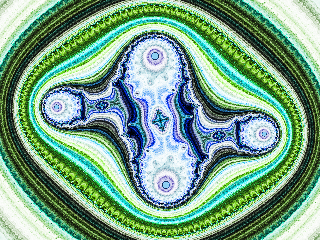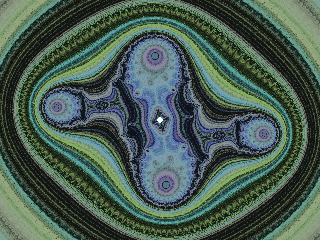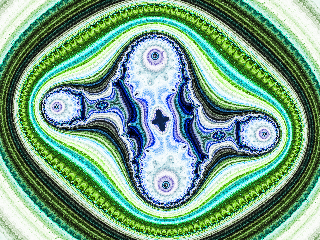This image severely challenges Nanoscope.
The first image shows what happens using only the center point as reference: there are cyan blobs in the centers of the four lobes.
The second image is an animation that shows how Nanoscope's blob-detection algorithm works. It tightens a "net" around a high-iteration area in the image, by finding a cluster of high-iteration points (calculated using perturbation theory!) and then "zooming in" autonomously. In this instance, on the third "zoom" it discovers a large region of identical iterations lower than maxiter (red) and recognizes this as a blob. It further tightens its net around the blob, but the net soon can't shrink any more as the region it's examining is no longer much larger than the blob itself. Then it chooses a secondary reference point and starts using that -- which fills in the blob, allowing it to further tighten the high-iter net until it's only a few pixels in size. Then it refines the choice of secondary reference point. (When rendering this at 8400x6300 it actually finds a blob again, with the first choice of secondary reference point near its edge, picks a new one in the middle of that, and eventually chooses two
more successively-better reference points in the lobe center before it finishes.)
The third imageshows that
both reference points are necessary to compute this image correctly: it'sthe same image computed at 320x240 with
only the reference point in the lobe center, and it has blobs at the
image center and in some other peanuts.
The attachment is the same 320x240, unantialiased image as the first and third, only using both reference points.


